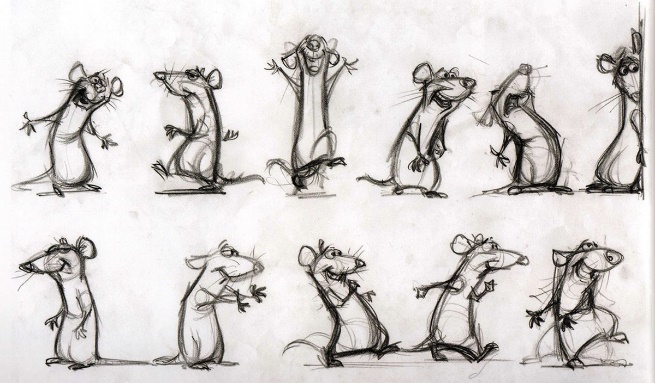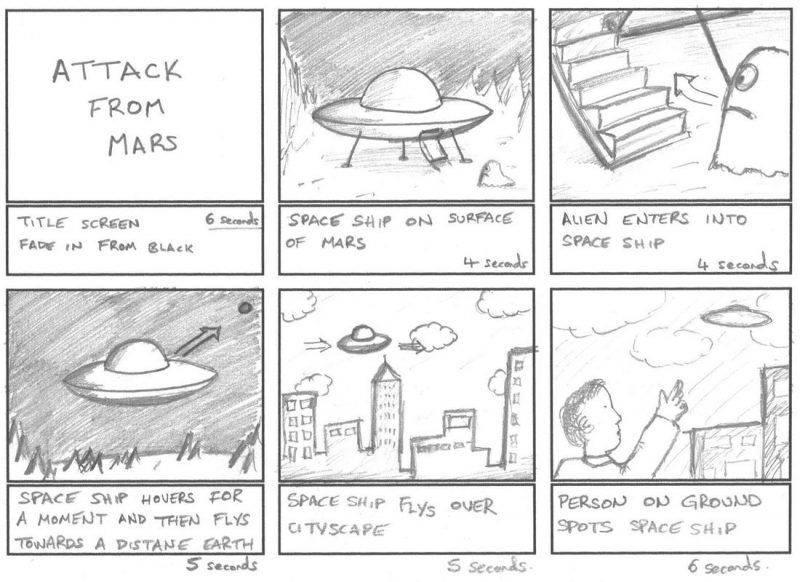What is Animation?
Animation is the art of drawing sets of sequential static images and making them appear to move, in other words, the process of bringing images to life.

Brief history
Animation has amazed and fascinated audiences for more than a century. In 1907, Vitagraph Company released an animation film called The Haunted Hotel, one of the oldest animation films. Viewers were willing to watch the film just to guess how the tricks were done, and it turned out to be what is now known as stop motion animation.
The image shows a stop motion set for stop motion animation (also called stop frame animation) is animation that is captured one frame at a time, with physical objects that are moved between frames. When you play back the sequence of images rapidly, it creates the illusion of movement, however it was a lengthy and time consuming process but it can be used to effectively create a very convincing animation.
Hand Drawn Animation
Hand drawn animation has been the key process of animation for many decades up until now. Nowadays, it is also known as traditional animation, and it is a technique in which each frame is drawn by hand then photographed and displayed in sequence at high speed.

With the release of Steam Boat Willie and Snow White and the Seven Dwarfs in the 1930s, Walt Disney was at the forefront of this genre, and they turned out to be a success. This technique was dominant until the rise of computer animation.
Process of Animation Production
Writing and Storyboarding
After the story is confirmed, the goal now is to convert this literary source material into an animation film script, from which the storyboard is derived.
Storyboards are illustrations displayed in sequence for the purpose of visualizing an animated or live-action film; it is essentially a large comic of the film made beforehand so it helps the directors visualize the scenes, more like a way of showing the flow of the story and the script using images and illustrations instead of words.

Voice recording
After the script is finalized and while the storyboard is being created, the soundtrack can be produced. Since animation relies on an accurate synchronization of the action to the sounds especially in terms of dialogue and lip sync, all the voice tracks have to be recorded and edited together before the animation stage proceeds, most of the time it’s easier to synchronize animation to a pre-existing soundtrack than it is to synchronize a soundtrack to a pre-existing animation.

Third Wish Software’s Magpie Pro offers both a visual and a phonetic frame-by-frame reference for animators wishing to attempt tight lip sync.
Animatic
After the soundtrack is recorded and combined with the storyboard drawings, the director will create an animatic or leica reel, the animatic is a filmed version of the storyboard, timed and edited to the soundtrack, it allows animators and directors to work out any script and timing issues that may exist with the current storyboard, and it’s a final check on the storyline, the soundtrack, the scene/shot selection, and the proposed timing and action continuity all work as anticipated, prior to the expensive animation production taking place.
Layouts
Layout begins after the designs are completed and approved by the director; layouts are required to show the precise size, position, design, and location of everything in each scene.
There are two types of layouts—character layouts and background layouts. The background layout defines the setting and design of just the background (everything that doesn’t move), while the character layouts (one or more, per-scene) show all the key action positions of the character on that background.
Each of the character layouts will also need to communicate the essential emotion, storyline, and major action poses in the scene, in addition to size and location.
The layout drawings and storyboards are then spliced, along with the audio and an animatic is formed (not to be confused with its predecessor, the leica reel). The term "animatic" was originally coined by Walt Disney Animation Studios.
Pencil Tests
Pencil test is done after all the drawings are cleaned up, after the animatic is approved and the production folders are completed, the animator will be given the scene production to animate it. The scene production folder will contain the necessary layouts that will relate to that specific scene.
With these, we’ll have all the information necessary to create the animation in that specific scene that will bring it to life.
Pencil tests are basically moving line drawings of the action that are filmed and timed according to the director's request. When the pencil test is available, it is edited into the animatic and evaluated to see if it has to be changed. If it does, the scene will be sent back to the animator for any necessary revisions or corrections. The scene artwork will be forwarded on to the clean-up or ink and paint teams for further development if the pencil test is accepted. Nowadays, pencil tests can be made using a video camera and computer software.
Animation
Once all the artwork is completed and the animatic is finally approved by the director, animation begins by finally composing all the artwork together.
Traditionally, painted animation cels and background artwork were filmed, frame by frame, onto 16mm or 35mm film using a specialized rostrum camera. Today, the bulk of compositing is done in the digital environment, where the various elements can be combined and processed within a single desktop computer.
The compositor will assemble everything contained within the scene —animation, backgrounds, and special effects, etc.—into one complete entity. Output is either to a digital medium, or else is rendered further onto cinematic film for public exhibition. This is done on a scene-by-scene basis until the entire film is complete.
Final Edit and Dub
After everything has been composited, the production editor is in charge of bringing all of the distinct animation scenes, as well as all of the audio elements (dialogue, music, narration, sound effects, and so on) together to complete the final film. Scenes are edited together in sequence in the final edit, according to the animatic's original timings.
Dialogue and sound are synced to the final image, and any additional sound effects (known as Foley sound) are recorded separately and then synced to the final image as well. Finally, in the dub stage, the music (if needed) is added, and all of the audio parts are blended, mixed, and balanced into a final master track.
Animation in Africa and the Middle East
Starting with South Africa’s animation industry, it has 29 production companies with few of its major studios including Clockwork Zoo Animation, Sunrise Productions and Triggerfish Studios.
The African animation market grew at a CAGR of around 7% during 2015-2020, the rising utilization of animated images or videos for providing creative effects in brand advertisements, product promotions, visualization of scientific theories, etc., is propelling the market growth in Africa.
In 2020, AnimaxFYB Studios (a studio from Ghana) produced the film Tutu which tells the story of Osei Tutu and the rise of the 17th century Ashanti Kingdom located in what is now modern day Ghana, and in 2017 they released Agorkoli, The story of Agorkoli focuses on the migration of the Ewe people who are in search for greener pastures settled under Togbe Agorkoli, leader of the Notsies. They had a peaceful period of time until an unknown rumor which escalated and became a big conflict between the Notsies and Dogbos.
For Middle Eastern animation industry it has the potential to emerge as an engine of growth for the continent.
The industry has been around for a long time, although only on a limited scale. With more worldwide exposure, information transfer, and training from multinational animation and game firms, it is evolving. The business is in a moment where we are seeing the growth of various animation, VFX and gaming companies and animators working on enticing storylines and content using the continent's vast potential for stories.
Conclusion
Animation is an amazing way of telling stories, communicating emotions and presenting ideas in a unique way that people from different ages can easily understand, animation has created history and culture while also being a part of it.
Many pieces of work in animation, animated films in specific have created a culture in which many communities and groups of people are created. An example is one of the largest companies that make animated films is Disney, as they have very popular animated films such as Aladdin with $504.1 million earned in the United States. They have also acquired Pixar, and it is a company that makes many popular 3D animated films, Disney films won many awards and have given many experiences to its viewers, not to forget anime (Japanese animation) is considered a successful industry, with studios like Ghibli, Toei Animation and Kyoto Animation.
Here in Cloud Aster we’re inspired by many styles of animation, and willing to put our fingerprint in the animation industry and share it with the rest of the world.